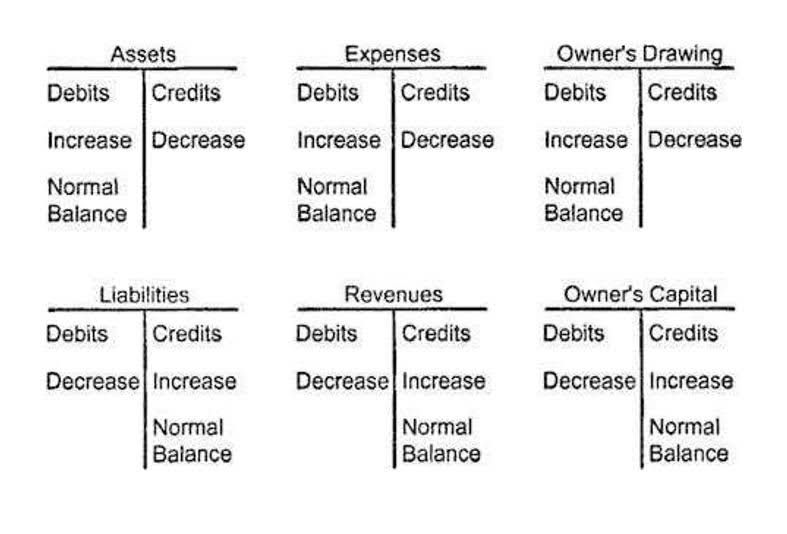
Let’s take a look at how to compare your assets and liabilities with this example. By taking on debt, you may be able to buy a house or car you wouldn’t be able to afford in full. In that way, liabilities can actually help you build up assets over time.
Liabilities definition: What is a liability in accounting?
In every case, knowing what your liabilities are is a strong step in helping you better plan for your business’s future. Liabilities are usually considered short-term (expected to be concluded in 12 months or less) or long-term (12 months or greater). They are also known as current or non-current depending on the context. Fincent is a 21st century Finance company that offers premium bookkeeping services at affordable rates. We manage your books to take the load off your shoulders, leaving you to attend to other more important areas of your business.
- You determine your net worth by subtracting your liabilities from your assets.
- Liabilities can be described as an obligation between one party and another that has not yet been completed or paid for.
- Long-term liabilities are obligations or debts that a company expects to settle over a period longer than one year or its normal operating cycle.
- They include long-term loans, bonds payable, leases, and pension obligations.
- A liability is anything you owe to another individual or an entity such as a lender or tax authority.
Great! The Financial Professional Will Get Back To You Soon.

Having them doesn’t necessarily mean you’re in bad financial shape, though. To understand the effects of your liabilities, you’ll need to put them in context. This may influence which products we review and write about (and where those products appear on the site), but it in no way affects our recommendations or advice, which are grounded in thousands of hours of research. Our partners cannot pay us to guarantee favorable reviews of their products or services.
Ask a Financial Professional Any Question

You can turn this around and say that a liability is a claim against your business from these other people or organizations. This formula is used to create financial statements, including the balance sheet, that can be used to find the economic value and net worth of a company. You can locate the information required to calculate a quick ratio on a company’s balance sheet, available in its most recent earnings report. In some cases, this may mean your liability transforms into an asset, like a mortgage balance becoming full home equity. In other cases, satisfying a liability simply means you have no further obligation to the party you were paying, as when companies pay off a bond issue. The order in which current liabilities are presented on the balance sheet is a management decision.
What is your current financial priority?
Everything the company owns is classified as an asset and all amounts the company owes for future obligations are recorded as liabilities. On the balance sheet, total assets minus total liabilities equals equity. Also, from the operations side, keeping good track of your business’s liabilities can help prevent shocks to your cash flow. When you keep up with things like credit card due dates, accounts payable in the next 30, 60, or 90+ days, you’re better able to know when and where you need the assets on hand to cover those liabilities.
What Is a Liability?
One of the most critical yet misunderstood components of this financial story is ‘liabilities’. While many entrepreneurs diligently track their revenue and assets, it’s equally crucial to understand the nuances of liabilities. The articles and research support materials available on this site are educational and are not intended to be investment or tax advice. All such information is provided solely for convenience purposes only and all users thereof should be guided accordingly. 11 Financial is a registered investment adviser located in Lufkin, Texas. 11 Financial may only transact business in those states in which it is registered, or qualifies for an exemption or exclusion from registration requirements.

Keeping liabilities low helps preserve the book value of the business. The balance sheet is one of three financial statements that explain your company’s performance. Review your balance sheet each month, and use the analytical tools to assess the financial position of your small business. Using the balance sheet data can help you make better decisions and increase profits. Below we’ll cover their basic definitions and functions, how they factor into the balance sheet and provide some formulas and examples to help you put them into practice.
- The quick ratio is the same formula as the current ratio, except that it subtracts the value of total inventories beforehand.
- A contingent liability is an obligation that might have to be paid in the future but there are still unresolved matters that make it only a possibility, not a certainty.
- Referring again to the AT&T example, there are more items than your garden variety company may list one or two items.
- By comparing assets and liabilities, anyone, internally or externally, can estimate a business’s ability to meet its obligations.
What Are Current Liabilities?
As a small business owner, you need to properly account for assets and liabilities. If you recall, assets are anything that your business owns, while liabilities are anything that your company owes. Your accounts payable balance, taxes, mortgages, and business loans are all examples of things you owe, or liabilities. Liabilities are carried at cost, not market value, like most assets. They can be listed in order of preference under generally accepted accounting principle (GAAP) rules as long as they’re categorized.

- It is common for lenders to compare the debt to capital ratio of different companies to identify those with the least investment risk.
- After a long career as an art dealer, Amrish Chauhan opened an art gallery in New York City in his early fifties.
- As your business grows and you take on more debt, it becomes even more important to understand the difference between current and long-term liabilities in order to ensure that they’re recorded properly.
- This could be anything from the $20 in your wallet to the Mona Lisa in the Louvre.
- Accrued expenses are expenses that you’ve already incurred and need to account for in the current month, though they won’t be paid until the following month.
- Current liabilities, therefore, are shown at the amount of the future principal payment.
- The Ascent, a Motley Fool service, does not cover all offers on the market.
When evaluating the performance of a company, analysts like to see that any short-term liabilities can be completely covered by cash. Any long-term liabilities should be able to be covered by revenue generated over time by assets. When something in financial statements is referred to as “other” it typically means that it is unusual, does not liabilities are the amounts of money due to others that need to be paid now. fit into major categories and is considered to be relatively minor. In the case of liabilities, the “other” tag can refer to things like intercompany borrowings and sales taxes. Because payment is due within a year, investors and analysts are keen to ascertain that a company has enough cash on its books to cover its short-term liabilities.


